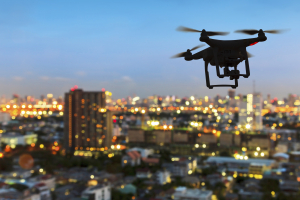How to Strengthen Community Support of a DFR Program.
Now that we’ve spent some time looking at what the Drone as a First Responder concept is and a few ways it can be implemented and deployed, it’s time to take a look at arguably the single most important aspect of setting up a DFR program; community engagement and program transparency.
A fair amount of negative public sentiment surrounding drones and UAS continues to exist, especially within public safety. While fears around drones used by public safety can run the gamut, it’s important for an agency adopting any type of UAS program to engage the public on the purpose, intent, and operation of that program. Talking to officials all over the country who run successful UAS programs, it’s clear that engaging the community early and often is a critical factor in overall program success.

Some of the ways agencies have found success in engaging the public includes press events, demo days, direct citizen outreach programs, attendance at community festivals and fairs, or other community events. While this sounds fairly straightforward, it’s important to remember that agencies who do engage with their communities will face some difficult questions. Because of this, it’s important to be able to communicate how the program will operate. For example, what kind of calls for service will the UAS be responding to? What is the video recording policy for the agency? Are there state laws which may impact video recording policy? What can the agency do and cannot do with UAS? Will the aircraft be used for surveillance or be weaponized? I’ve heard every one of these questions and more from concerned citizens and an agency should be prepared to answer them. An informed citizen is much more likely to understand the limits, capabilities, and benefits of a UAS program and is therefore much more likely to see it as a benefit to the community and a tool for first responders. All of this becomes even more critical when looking at it through the lens of a DFR program. DFR is more complex and brings up additional questions that you will want to be able to answer.
If you have questions on community engagement and transparency, we are happy to talk through the specifics of how this could be used to strengthen your community’s support of your UAS program. Contact us today!
In case you missed it, check out our previous posts on our DFR series here.

Author: Ben Kroll
Ben Kroll is a co-founder and the Chief Operating Officer of Atlanta-based Skyfire Consulting. Ben manages the day to day operations at Skyfire which was founded in 2015 and serves the public safety industry by integrating drone technology into law enforcement and fire-rescue agencies. From a background in curriculum development as an FAA licensed flight instructor and commercial pilot, Ben has brought his manned-aviation experience to the drone industry and serves as a thought leader and international speaker on the integration of drones into multiple industries. As a member of the FAA Integrated Public Partnership program, Ben wrote the first of its kind “Beyond Visual Line of Sight” authorization and safety assessment for Chula Vista Police Department’s Drone as a First Responder Program.